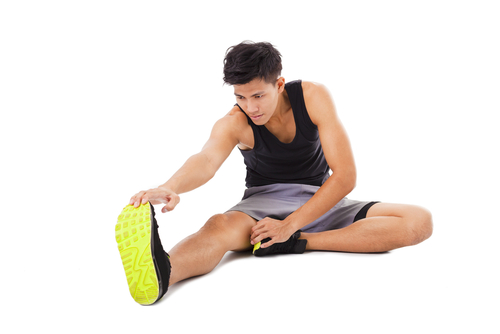Sep 30, 2016The Right Range
Athletes are asked to perform. They are supposed to be able to explode at a moment’s notice. Quick movement is required but in order to be able to jump up and dunk or make a hard cut on the field, their body needs to be primed.
The truly athletic body is highly toned. It is an athletic, muscular structure that is totally strong and tight.
For example, a sprinter’s hamstrings and glutes are tight, and they should be. When they are used, they stretch and snap back. Simply, this is how explosive force is generated.
There is a high degree of tension in the muscles of a well-trained athlete. That is what makes them explosive.

Power, the ability to move a mass quickly, is the exemplification of a taught, reactive muscular system.
Because this is the make-up of well-trained athletes, they often are in danger of “pulling a muscle.” I don’t like that term but it is what people call it when an athlete creates a major tear in the belly of a muscle.
During regular training, athletes are constantly subject to micro tears of their muscles. It is normal; it is what we refer to as soreness.
Occasionally what happens is more than a micro tear. Major fibers can rip. There can be swelling. A bad tear can exhibit bleeding.
Ligaments, the connection between muscle and bone, can also tear if the muscle becomes stronger than the connection, which can happen as a result of training.
The question is, how do you prevent this from happening? There are a number of ways to ensure that your athlete does not run into this type of trouble.
First, you have to establish a safe range of motion (ROM). ROM refers to the ability of the athlete to reach full extension of a joint and its supporting musculature.
As an example, hamstrings attach at the pelvis and the knee. When the leg is driven forward as in a sprint, that muscle reaches full and rapid extension followed by a shortening that is equally quick. If the muscle is not prepared for that situation, it will tear.
One of the ways to prepare for that type of situation is to do long holds — long, slow stretches, where the muscle is allowed to slowly lengthen. These are called static stretches.
A muscle takes about eight seconds to release after a stretch is initiated. But it will continue to release in length for three minutes or more. By doing long holds when you start your stretching programs the muscle learns to release. The longer the hold, the longer the release length. This is a form of muscle memory.
This type of stretching is important for every athlete. It programs the body for extreme and rapid change in position.
What you are doing is increasing range of motion by doing a long hold. In this case, we are talking about the hamstring, but it could be any muscle group. Programmed range of motion is important if you want to prevent injuries.
This type of stretching should be done when the body is very warm. When the heart is really pumping and circulation is optimal the muscular system is most flexible.
The best time to do long hold stretches is at the end of practice for a number of reasons.
Body heat and viscosity is elevated, which makes the muscle more pliable. Kids don’t like to do this because when practice is over, it’s over. But this is the way to set up the next day’s work or competition. This is how you must sell it.
It’s a good way to remove fluid in the body that can cause stiffness. It is the optimal time to develop range of motion.
There is one other reason to do this type of stretching at the end of practice rather than before it. This type of static stretching has an effect on the nervous system. The Golgi tendons are a neurological component of the muscular system. They react to static stretches. Once the stretch has begun, they relax the muscles. That is their primary purpose.
Golgi tendons exist to release the muscle so it won’t tear. If you go through a series of static stretches before a competition or practice you will reduce the ability of the muscle to react with maximum force.
If you are a competitor, you want your muscles to have as much explosive potential as possible. Therefore, static stretches before practice or competition are not optimal for the athlete if they are looking to maximize their neuromuscular system’s ability to react.
You can prevent a lot of injuries by statically stretching your athletes after practice. You will also make the next day’s workout more productive.



